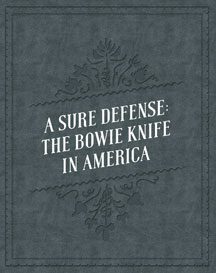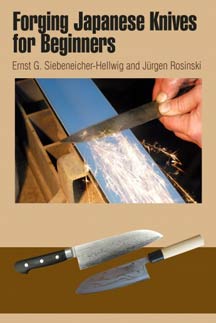- You cannot add "The London Knife Book, an A-Z Guide to London Cutlers by Ron Flook" to the cart because the product is out of stock.
Forging Damascus Steel Knives for Beginners by Ernst G. Siebeneicher-Hellwig and Jürgen Rosinski
$24.95
A new entry-level book on the making of damascus steel and damascus steel knives, filled with 180+ high quality photographs and diagrams and ring bound so it lays flat on the workbench. Ring bound, full color, 104 pp.
Description
A new entry-level book on the making of damascus steel and damascus steel knives, filled with 180+ high quality photographs and diagrams and ring bound so it lays flat on the workbench.
BOOK REVIEW
Reviewed by Knife World Staff
This new title is the seventh and latest in a series of books originally written for a workshop series in Germany’s Messer Magazin, subsequently translated into English and put in book form. The entire series has been well received, due in no small part to the excellent full color photography that illustrates the detailed steps explained in the text.
Forging Damascus Steel Knives for Beginners was written by the same authors that penned the series’ first book, Basic Knife Making: From Raw Steel to a Finished Stub Tang Knife, which explains how to get started in bladesmithing using an inexpensive homemade forge – the book you should start with if you have no prior experience as a bladesmith. The new book takes the difficulty level up a notch, approaching damascus steel with the same simple, direct you-can-do-it style.
Beginning with a “brief history of damascus steel” which touches on much more than that, the needed equipment and materials are then addressed. This book makes use of the same simple homemade gas-fueled brick forge presented in Basic Knife Making, or a flue tube gas forge alternative that is built step-by-step. Basic tools like hammers and tongs are discussed before moving on to steels. I find the ‘types of steel’ section of the book a bit difficult to understand, relying exclusively on European and Japanese carbon steels and with a potentially confusing note about nickel (metal) at its end – but don’t sweat it. The techniques for working carbon steels are essentially the same, and you can find plenty of ideas about good damascus steel combinations in any knife magazine, or online.
The main focus of the book, and the reason most folks would buy it, begins with the chapter entitled “Forging Damascus.” As with the rest of the book, the process is explained with a minimum of text and lots of photos, from assembling the ‘package’ of stacked steel bars, to welding, forging out, and folding, which is repeated until the desired number of layers have been achieved. The next chapter deals with manipulating the different layers in the steel billet to create patterns that will appear in the finished blade, explaining how to create standard damascus patterns like ‘ladder’, ‘rose’ (a.k.a. ‘raindrop’), and ‘twist.’ Finally, there are brief sections describing multiple-bar damascus blades and basic mosaic damascus, which require a level of experience that is probably beyond the scope of this book. Etching your blade, to bring out the contrast between the different layers of steel, is really the last step of the process that is specific to damascus steel; it is well covered in the knifemaking sequence that follows.
The next two chapters are devoted to turning the damascus steel billet you’ve made into a knife. Just a few pages address blade forging, grinding, and heat treatment, which are appropriately covered in much more detail in the Basic Knife Making book. Handles, bolsters and finishing are also briefly covered, using a full tang knife as an example. This type of construction was not addressed in Basic Knife Making, so I guess you could look at this as bonus coverage. The book wraps up with sharpening, testing edge sharpness, rust protection, and an appendix of useful information (as well as a recipe for a “meal for bladesmiths,” as in the first book).
In summary, Forging Damascus Steel Knives for Beginners is a basic introduction to the making of pattern-welded damascus steel knives. Inexperienced bladesmiths are encouraged to start with the authors’ previous book, Basic Knife Making: From Raw Steel to a Finished Stub Tang Knife, but once you’ve mastered those basic skills, this new book is a great way to enter the challenging and rewarding world of damascus steel.
Ring bound, full color, 104 pp.





Reviews
There are no reviews yet.